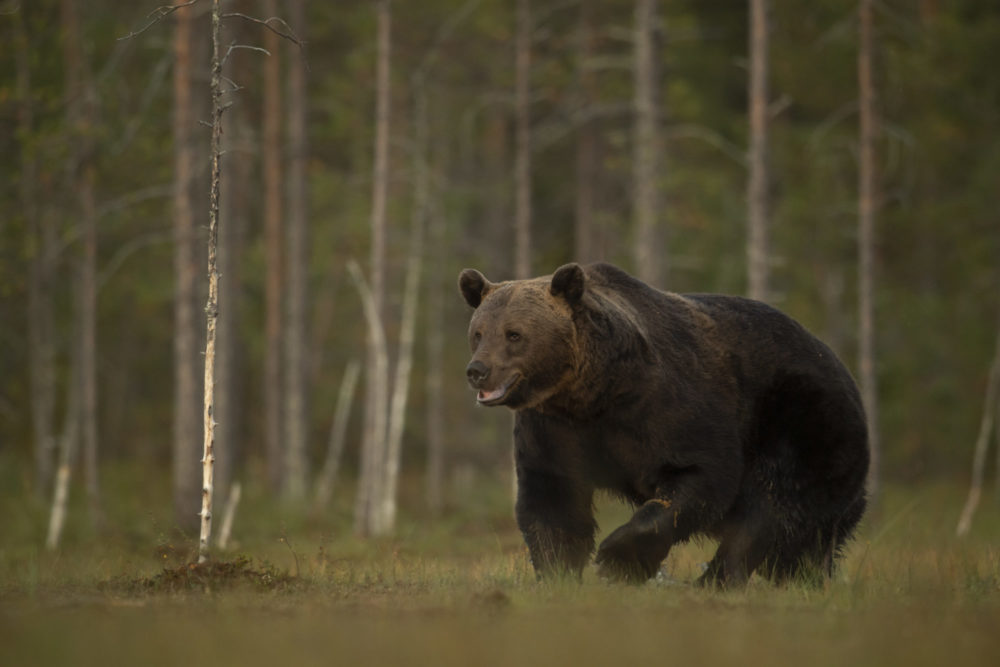How does the bear live?
Written by Nicklas Iversen | Last edited 1. June 2021
The bear is a solitary animal, meaning that it lives alone. The exception is when the female has cubs, of course. Then she will live with her cubs for two or three years. Male bears live a more solitary life and largely meet other bears only in the breeding season. On this page, you can learn about how a bear lives.
A COLD START TO LIFE
Not much happens in the bear’s life in winter. That is because the bear spends the cold months sleeping it’s winter sleep. It does not eat anything all winter long. Nor does it drink or go to the toilet. The bear slows it’s heart rate and lowers it’s body temperature to preserve energy. At this time of year, the bear lives off of it’s fat reserves from the previous summer. The bear loses up to a third of its body weight over the winter. It is at this chilly time of year that bear cubs are born and the bear’s life begins!
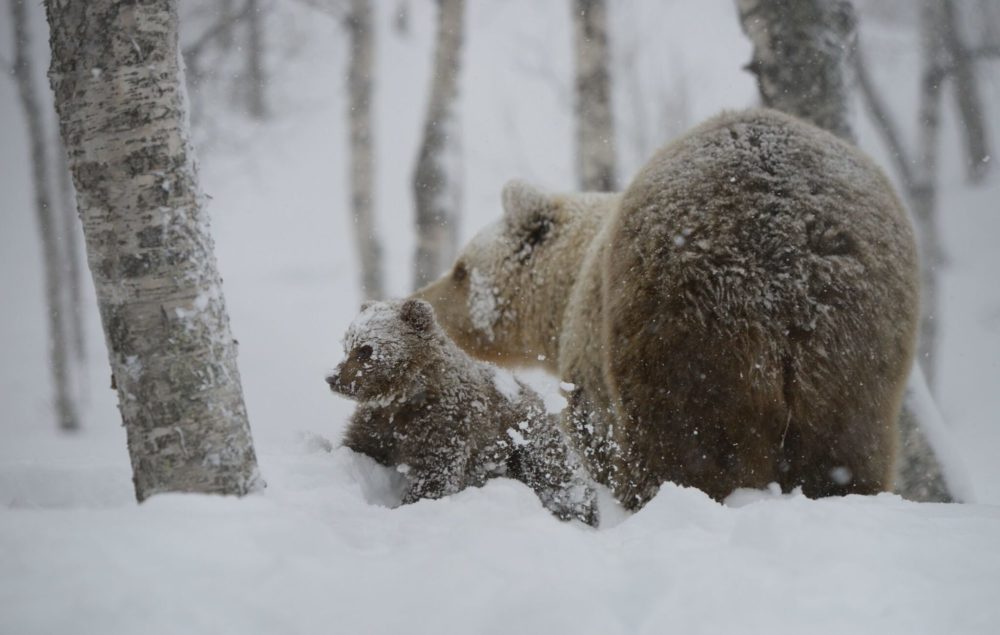
GROWING UP
De små bjørnungene vokser fort, og i mai er de klare for å bli med moren ut av hiet. Fra nå av vil de dilte i hælene på henne de neste to årene.
The small bear cubs grow quickly, and in May they are ready to go outside the den with their mother. From now on, they will toddle at her heels the next two – or sometimes even three – years.
Selv om binna passer godt på barna er det ikke uvanlig at omtrent halvparten av alle bjørneunger mister livet i løpet av det første leveåret. Det som dreper flest bjørneunger er andre hannbjørner. Disse kan drepe barna, slik at binna kan bli klar for å parre seg på nytt. På denne måten kan hannbjørnen sørge for at han kan få parret seg med binna og bli far til hennes nye unger istedet. Slike barnedrap høres brutalt ut, men er ganske vanlig i dyreriket.
Although the she-bear takes good care of her cubs, it is not uncommon for around half of all bear cubs to die during their first year of life. Most bear cubs that die are killed by other male bears. Male bears may kill cubs so that the she-bear will be able to mate again. In this way, the male bear can ensure that he mates with the she-bear and becomes the father of her new cubs instead. Such infanticide sounds brutal, but is quite common in the animal kingdom.
In their first autumn, bear cubs already weigh around 40 kg. They sleep in the den together with their mother.
They are generally big enough to manage by themselves the next summer, but many will spend a second winter with their mother before leaving her.
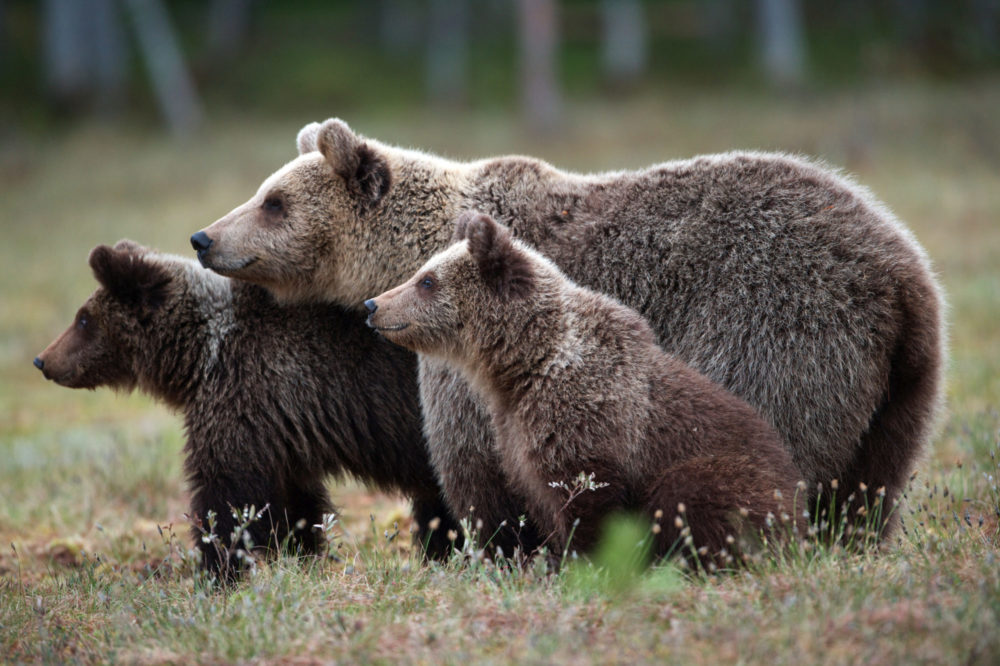
YOUNG BEARS
When bears are old enough to fend for themselves, they will leave the security of their mother to find their own area to live in. How far they go depends on their sex.
Young she-bears are content to settle close to the area where they grew up. For them, it pays to have local knowledge and know where the best sources of food are for when they have to raise hungry bear cubs one day.
It is different for male bears (boars). They will wander far and wide. They do this to find areas where there are females to mate with. There are not many unattached females in any one year. Either they are busy with cubs or under the watchful eye of older, stronger males, preventing the younger bears from getting a chance. This causes the young males to roam over large distances.
Young bears become sexually mature at three years of age. This means that they can start mating in order to produce new bear cubs.
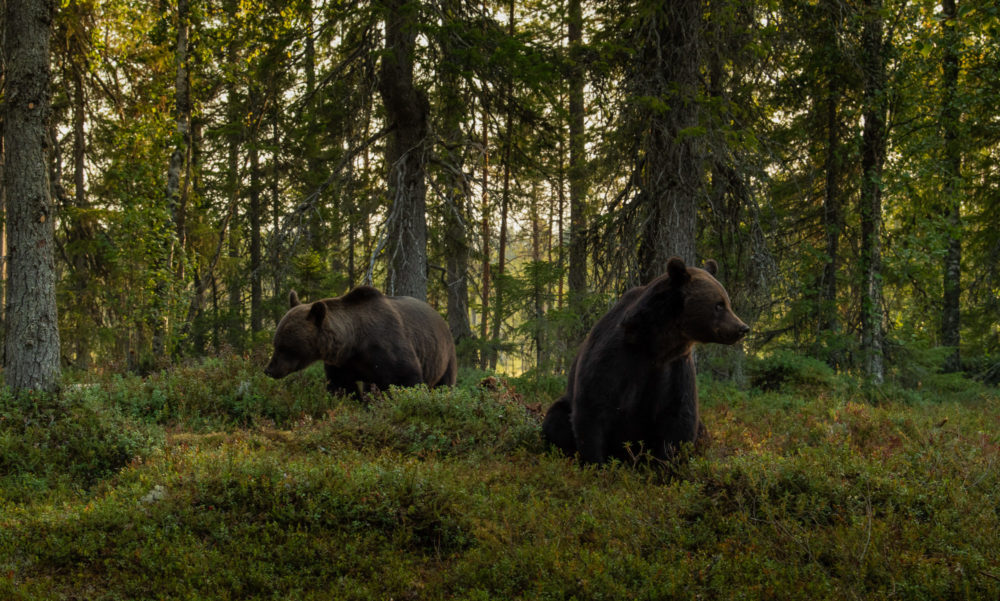
MATING AND BIRTH
Bears can mate throughout the summer months, but are usually most active in May and June. The male bear will leave the she-bear after mating. She will have to bring the cubs up by herself, as is the case with most other animals.
Although bears can mate throughout late spring and the summer, not much happens in the she-bear’s abdomen before she settles down in her den in late autumn. The brown bear have this in common with the wolverine.
The she-bear’s ability to be impregnated without the embryo developing immediately is called delayed embryonic development or embryonic diapause and is common in the animal kingdom. It ensures that bear cubs are born at the right time and have the best chance of surviving.
The cubs are born around New Year and do not look much like bears to begin with. At birth, a bear weighs around 300 grams – that’s about the size of a squirrel! It has no fur and is completely blind. In other words, it is totally helpless. The only thing a bear cub does it’s first few months of living is drink the milk of it’s sleeping mother in the den. By May, the cub will have grown to about 5 kilograms in weight and is ready to follow its mother out into the world.
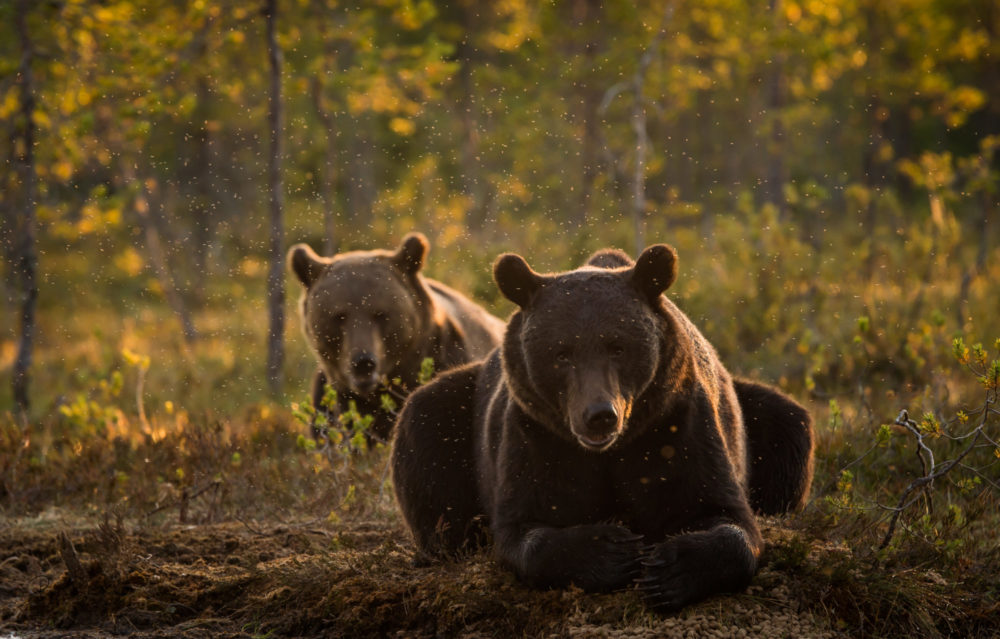
WINTER SLEEP
When winter approaches, the bear has to find a den where it can sleep through the winter. It may well have to dig and search in several places before finding a suitable den for the winter. Bears can use different dens. Old, abandoned ant hills are popular, but bears can also dig their way into a slope or straight down into a hole in the ground. On other occasions, bears may use natural formations like screes and caves. The most important thing is that the den should provide shelter from wind and weather.
It is the she-bears in particular that make good dens. This is because they may have to give birth to small, helpless cubs over the winter. That makes it important to have a snug, cosy den.
Male bears, on the other hand, are not much concerned about the interior – like most men. They may make do with a tree uprooted by the wind, a low-hanging spruce tree or simply a mound of twigs and other debris to lie down in. The males do not have to give birth to cubs, of course, and their thick layer of fat and dense fur provides excellent protection from the winter!
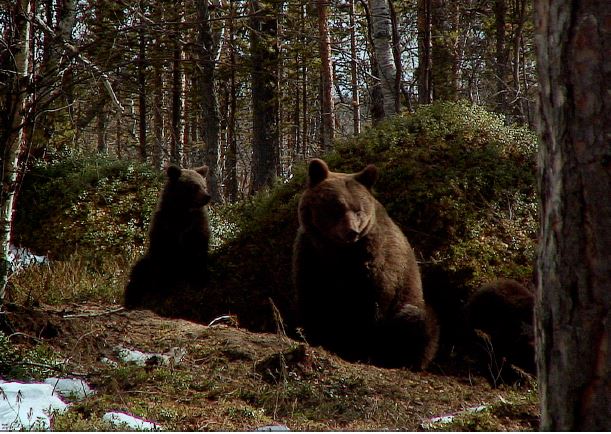
DEATH
A bear can live for a long time. Up to thirty years in the wild given the chance. If a bear reaches that age, it will usually die as a result of bad teeth, as it will not be able to feed itself. But bears rarely die of old age here in Norway.
I Skandinavia dør de fleste bjørner tidlig. Og det er mennesket som er farligst for bjørnen. Jakt er den viktigste dødsårsaken for bjørn i Skandinavia. I Norge har man ikke fast jakt på bjørn. Hvis en bjørn tar mye sau, eller skaper andre problemer kan det allikevel bli tillatt å skyte den bjørnen. Dette kalles skadefelling.
In Scandinavia, the majority of bears die early, and the greatest threat to them comes from humans. Hunting is the main cause of death for bears in Scandinavia. There is no regular hunting of bear in Norway. If a bear takes a lot of sheep or causes other problems, however, a licence may be granted to shoot it. This is called lethal control.
Sweden has far more bears than Norway, so hunting for bears is regulated in the same way as other huntable prey. On average, the bears shot in Sweden are five years old. So still young. It is not very common for bears to live beyond fifteen years of age in Scandinavia despite their natural lifespan being twice that.
I Sverige har de langt mer bjørn enn i Norge, og der har de vanlig jakt på bjørn. Gjennomsnittlig er bjørnene som blir skutt i Sverige fem år gamle. Altså unge. At bjørnen blir eldre enn femten år i Skandinavia er ikke så vanlig, selv om den naturlig kunne blitt det dobbelte.
This article has been written by Bjørn Henrik Stavdal Johansen, a nature guide at Visitor Centre Carnivore Flå.
